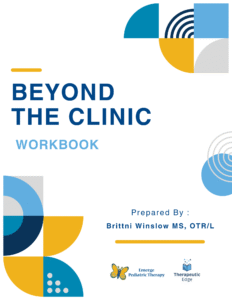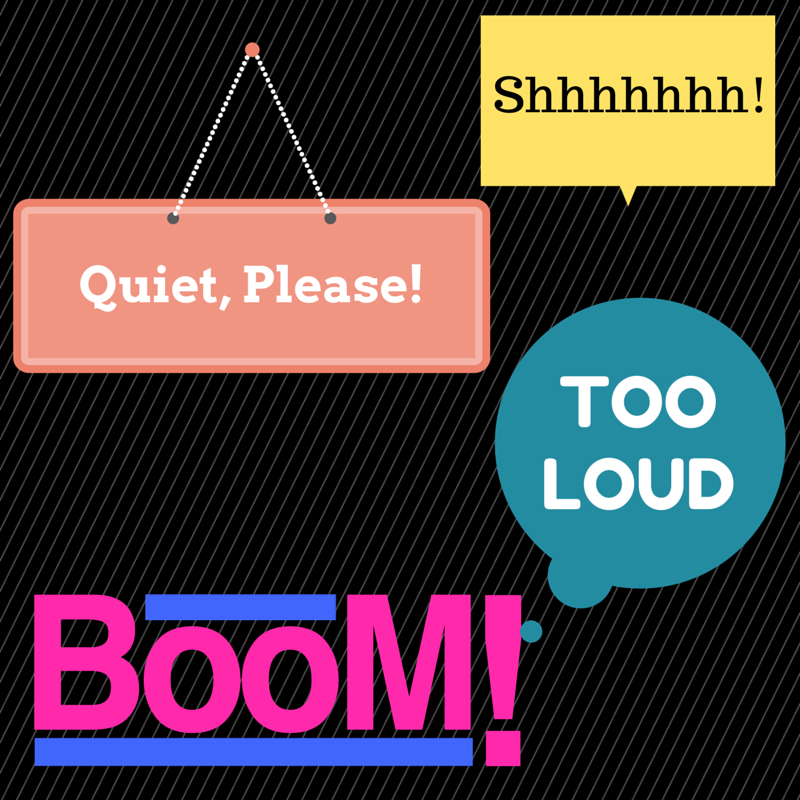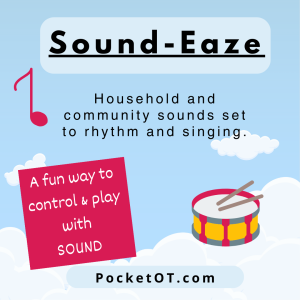
What memories, thoughts, emotions does that bring up? How about the sound of popping popcorn? Does that make you think of movies, circus, carnival?
Think of the sound of nails on a chalkboard. How about the sound of a bee buzzing near your head?
Each sound evokes feelings within us. Sounds are more than just noise. Human beings make sense of our world from sound. In fact, the receptors in our ears are connected to areas in our brains that involve memory, emotion, fear, and our basic alertness levels (among many others). This is why we form feelings that are attached to the sounds we hear. What I find truly amazing, is that our body remembers sounds to help us to determine if something is safe or dangerous and then our body reacts in response. When the auditory system develops appropriately, we learn to make responses that fit the sounds we hear. For example, sirens cause us to become alert and search to see where they are coming from.
Remember that children with autism and with sensory integration/processing dysfunctions can have difficulty with forming a response to something that they sense (via touch, taste, sight, or sound). When children hear sounds, they form an association. Here’s more information about Sensory Processing Disorder in an earlier blog post. For most of our children with hearing sensitivity, a loud sound they have heard in the past may have produced a fear reaction or, “fight or flight” response. These sounds are now perceived as dangerous to them. So many of my clients fear fire alarms because they are loud and unpredictable. They have difficulty realizing that the fire alarm is meant to protect them. In fact, for years my own son was so afraid of the fire alarm in hotels that we had to look in the room before actually booking it so that he could see the type of fire alarm being used. This is not at all practical! We simply had no idea how to help him. The same can be said for any sound that may elicit an inappropriate reaction in our children.
 I’m often asked for ideas to help children who fear noises. It’s best to work with them via a social story, empathy, and understanding to create a new or more positive memory of sound.
I’m often asked for ideas to help children who fear noises. It’s best to work with them via a social story, empathy, and understanding to create a new or more positive memory of sound.
1) Search for pictures of fire alarms (or whatever it is that is making the sound your child fears). Print, glue, or draw pictures in a social story and review it often so that your child will be prepared.
2) Encourage your child to make a list of sounds that cause him to be afraid. Make a plan for each sound. For example, when he hears a siren, he can cover his ears, count to ten and take deep breaths. Practicing in advance will help to give him confidence and lessen anxiety. Talking about the sounds may initially upset your child. Practice deep breathing and relaxation strategies when looking at the pictures and then rehearse and review the strategies frequently. An ounce of preparation is most definitely worth a pound of cure.
4) Work toward touching or holding the items your child fears. After becoming comfortable looking at the item (or pictures of it), allow your child to touch the actual item. Fire stations are often willing to work with children who have special needs in order to understand that the items exist to protect us. Contact your local police or fire station for more information. Sometimes, planning a field trip with a therapist is beneficial! Make sure that you permit your child to bring a “safe item” for extra comfort.
5) Several forms of earplugs and noise-canceling headphones are available. They may be worn when anticipating a loud noise. Some IEPs permit a teacher to notify a student before a fire drill. Putting on the headphones/earplugs gives the child more control over the situation.
6) Fun CDs like Sound-Eaze and School-Eaze are available via our website. 
The CDs have sounds set to gentle rhythms and vocals to help make sounds more tolerable. They are not part of any listening program and are a therapeutic tool. An OT and a Music Therapist worked to re-write lyrics to nursery rhymes for the Sound-Eaze CD so that children can sing them when afraid.
7) Therapeutic brushing and heavy work activities can also help children to maintain regulation. Heavy work is generally calming. Pushing, pulling, lifting, and carrying are all ways to gain heavy work (proprioceptive) input. Other ideas include cuddling under weighted stuffed animals (see below) or blankets, using lycra fabric OR order a body sock, and “animal walks” (using the body to walk like a dog, bear, frog, etc.) Doing an obstacle course while crawling is an awesome way to get proprioceptive input!
Using large muscle groups is a great way to get this type of input. Formal programs such as Therapeutic Listening may be used by occupational therapists to help integrate the sensory system. Therapists have seen great success with listening programs but they must be provided and regulated by your OT.
Remember that not everyone is going to tolerate loud sounds. Many people simply need to avoid them when possible and it’s OK if the process is SLOW. Patience is key to helping children who have built up fear surrounding any object. Consider your own fears when working with children! You wouldn’t want to hold a slimy snake if you’ve been afraid of them throughout your life.
Please share your stories of fear of sound and what tips you’ve used.



